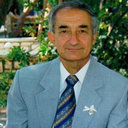Anaphylactic cardiovascular collapse and Kounis syndrome: systemic vasodilation or coronary vasoconstriction?
キーワード
概要
The first reported human anaphylactic death is considered to be the Pharaoh Menes death, caused by a wasp sting. Currently, anaphylactic cardiovascular events represent one of most frequent medical emergencies. Rapid diagnosis, prompt and appropriate treatment can be life saving. The main concept beyond anaphylaxis lies to myocardial damage and ventricular dysfunction, thus resulting in cardiovascular collapse. Cardiac output depression due to coronary hypoperfusion from systemic vasodilation, leakage of plasma and volume loss due to increased vascular permeability, as well as reduced venous return, are regarded as the main causes of cardiovascular collapse. Clinical reports and experiments indicate that the human heart, in general, and the coronary arteries, in particular, could be the primary target of the released anaphylactic mediators. Coronary vasoconstriction and thrombosis induced by the released mediators namely histamine, chymase, tryptase, cathepsin D, leukotrienes, thromboxane and platelet activating factor (PAF) can result to further myocardial damage and anaphylaxis associated acute coronary syndrome, the so-called Kounis syndrome. Kounis syndrome with increase of cardiac troponin and other cardiac biomarkers, can progress to heart failure and cardiovascular collapse. In experimental anaphylaxis, cardiac reactions caused by the intracardiac histamine and release of other anaphylactic mediators are followed by secondary cardiovascular reactions, such as cardiac arrhythmias, atrioventricular block, acute myocardial ischemia, decrease in coronary blood flow and cardiac output, cerebral blood flow, left ventricular developed pressure (LVdp/dtmax) as well as increase in portal venous and coronary vascular resistance denoting vascular spasm. Clinically, some patients with anaphylactic myocardial infarction respond satisfactorily to appropriate interventional and medical therapy, while anti-allergic treatment with antihistamines, corticosteroids and fluid replacement might be ineffective. Therefore, differentiating the decrease of cardiac output due to myocardial tissue hypoperfusion from systemic vasodilation and leakage of plasma, from myocardial tissue due to coronary vasoconstriction and thrombosis might be challenging during anaphylactic cardiac collapse. Combined antiallergic, anti-ischemic and antithrombotic treatment seems currently beneficial. Simultaneous measurements of peripheral arterial resistance and coronary blood flow with newer diagnostic techniques including cardiac magnetic resonance imaging (MRI) and myocardial scintigraphy may help elucidating the pathophysiology of anaphylactic cardiovascular collapse, thus rendering treatment more rapid and effective.







